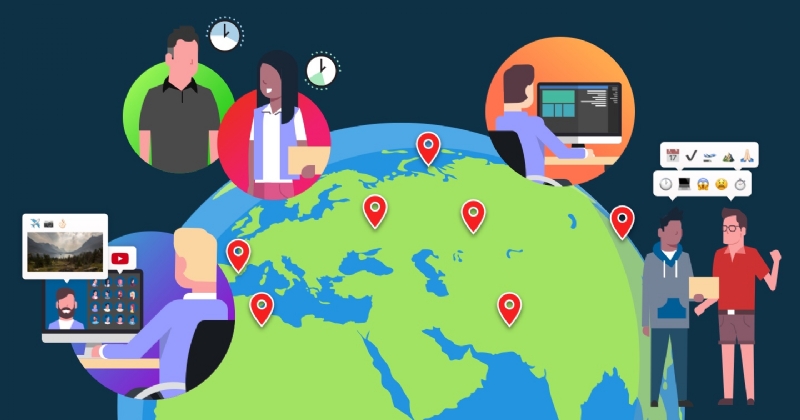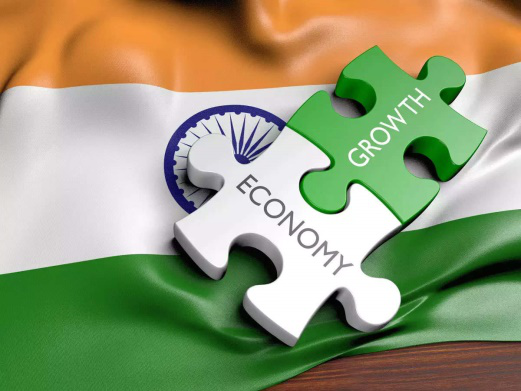FROM LOCKDOWN TO REVIVAL
26 May 2020 12:16:35

The other day my seven-year old grandson in Australia asked me over the phone, “ So Ammamma, tell me, are you in lockdown?”, and I smiled at the casual way this word has entered the regular lexical usage of babes. A history of sorts was created when our Prime Minister took this brave step, though we were not unfamiliar to his ways of working. To those who were safe and secure in the cocoon of their own homes, it came as an acknowledgment that disasters never come with a notice period, but to the others, it became a nightmare. Indians abroad had to make a scramble before the last flight. Some managed, many didn’t. Those who managed to reach India are all praise for the efficient handling of their quarantine and onward journeys to their homes.
Life came to a standstill for all, specially the migrant workers and daily wage earners. Loss and suffering became common words bonding both, the labourer as well as the industrialist. Overnight, small, medium, and even large business became crippled and even paralysed. Not everyone came under the ‘work from home’ category, and soon even large manufacturing enterprises came to a grinding halt. The microscopic COVID-19 virus, according to data provided by the John Hopkins University caused 2.5 lakh deaths worldwide, 35 lakhs confirmed cases , sent stock markets tumbling, and the rupee grovelling. The Indian lockdown came at the right moment.
India’s granaries were full but those without a ration card had no share in it. Yet, the Government, NGO’s and philanthropists did a herculean task of feeding the hungry. The Tata’s opened up their hotels for doctors and nurses, innovative attempts of big auto manufacturers turned assembly lines to manufacture ventilators, distilleries diversified to make hand sanitizers: all proving that Indians could be ingenious. RBI’s Rs. 1 lakh crore balm did not seem enough to tide over job losses of about 4 crore Indians. The solution is a dialogue between the Industry, Economists, and Health sectors on how to re- builds the collapse. This could also offer lessons on keeping buffers in place for lessons on future Disaster management.

One thing is for sure – that life will never be the same again. ‘Work from home’ (WFH) and ‘learn from home’ (LFH) have become actual practices pan-India and created opportunities for young turks to create new niches in the fields of learning and study.
The global economic crises of 2008-09 could perhaps be seen as a mere mole-hill against this COVID-19 mountain. The pandemic needs to be contained by testing, quarantining, sealing hotspots, contact tracing, social distancing and good hygiene. The new work-culture will include temperature checks, not-so-crowded transportation, re-opening the supply chain and re-starting SME’s. The Government needs to quickly open a cash flow to the lower and lower-middle classes to keep them on survival mode as hunger can make one wild and defy lockdown instructions. Sinking SME’s need to be revived by relaxing terms of loan guarantees in a case-by-case study. Interest waivers for a quarter if not a year post lockdown will go a long way here. A synergy may also be created between larger and smaller firms to create a good business partnership. Our Prime Minister has indicated that the key to recovery is through self-reliance to prevent rurals from converging into the urban. The ‘Make in India’ thrust gives a fillip to attract FDI but the wary investor needs to be re-assured about the licence-permit red-tapism of past experiences. Meanwhile, NRI’s are considering their homeland as a safe haven than their adopted country where alarming rates of infection and deaths occurred due to relaxed attitudes and lax lockdowns. With mortality rates lowest in India, their re-location could bring good investment and job-pools.
Key areas for Government participation in rebuilding the economy would be healthcare, public transportation, services of electricity, drinking water, sanitation and inter-state movement of goods, services and labour. Experts believe the virus will stay till a vaccine is developed, but private enterprise needs a kick-start without delay with adequate backing of the government, thus extending confidence for public investment.

The stimulus package of 1% of the GDP does not seem enough for a bounce-back. It is imperative that around 5 to 6 % is needed as about half the population has been affected,. The only way to boost economy would be to put money in the hands of the 60% at the bottom rung to revive demand. Just a brief moratorium on debt payments may not be sufficient to prevent a chain of bankruptcies from emerging. Writing off debts and staggering interests for about six months could help here. Direct cash deposits to those with no income, issuing ration cards to all, and financial support to small and medium enterprises are the only ways to kick-start the economy. Thus the focus needs to be on general fiscal stimulus through monetary policy support. The Indian revival story will then become a world model.

Dr. Nalini Ramaswamy
After her MPhil and Ph.D in English Literature. from University of Mumbai, Dr. Ramaswamy has gathered extensive and intensive experience for 39 years as Associate Professor & Head of the English Department in KMC College (affiliated to University of Mumbai). She has retired recently as Principal and still engages in guiding aspiring students in her field.
She has presented Papers at various National as well as International conferences, refereed Ph.D vivas in different universities on India and has been a research guide. She has also commendably hosted the responsibility as a past President of the Rotary Club of Khopoli, and still remains an active member. Besides this, she has also been invited by Norway and the USA as member and Leader respectively of Group Study Exchange teams. Her interaction with the various strata of the youth gives her an extraordinary insight into the trending thought process of the gen next, which reflects in her work today. She continues guest lecturing at different colleges and delivers motivational speeches to youth in various programmes, as she travels between India and Australia round the year.